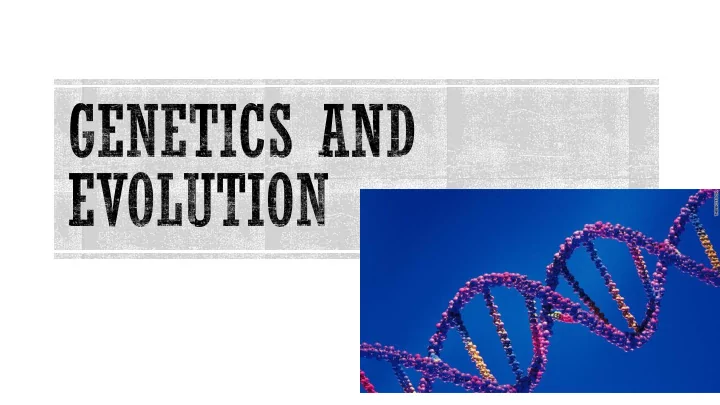

Haploid: Half set of chromosomes (1 of each) Diploid: Full set of chromosomes (2 of each) Genotype: Part of the DNA sequence (represented by case sensitive letters) BB, Bb, bb Phenotype: The actual appearance of the gene Brown hair, blond hair Allele: alternative forms of the gene B -dominant, b-recessive
Genes (Alleles) are the carriers of inheritable characteristics Alleles segregate during the formatting of gametes (sex cells) An inheritable characteristic = trait I.e. eye colour, seed colour, hair colour A portion of DNA codes for a specific protein Genes are the source of random variation Therefore variation in DNA is the biological basis for evolution
“Father of Genetics” Austrian Monk In charge of Monastery garden His work with genetics enabled us to explain the mechanism of evolution Studies involving pea plants Would cross plants with different traits to produce hybrids Discovered there are dominant traits and recessive traits Those with the dominant trait will express that trait Those with the recessive trait will express that trait only if the dominant allele is not present Recessive traits do not disappear as later generations could display the trait
Probability is the likelihood that an event will occur Coin toss Punnett Squares Can be used to determine gene combinations that may result from a genetic cross Letters represent alleles Capital=dominant, lowercase=recessive Organisms that have identical alleles for a trait are said to be Homozygous Organisms that have two different alleles for a trait are said to be Heterozygous
Genes for different traits can segregate independently during the formation of gametes This accounts for the genetic variation observed in plants, animals and other organisms
Some alleles are neither dominant or recessive, and many traits are controlled by multiple alleles or multiple genes. Incomplete dominance One allele is not completely dominant over another Codominance Both alleles contribute to the phenotype
Characteristics are determined by the interaction of genes and the environment. Ex: Sunflowers height Genes will influence Also influenced by climate, soil conditions, availability of water Genes provide a plan for development, but how that plan unfolds depends on the environment.
Recommend
More recommend